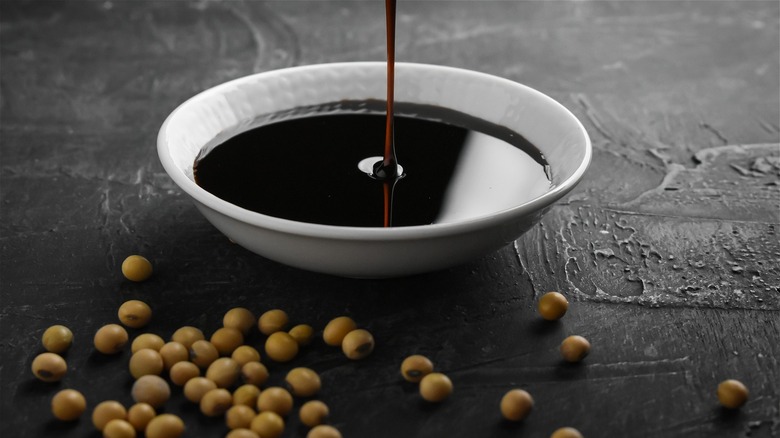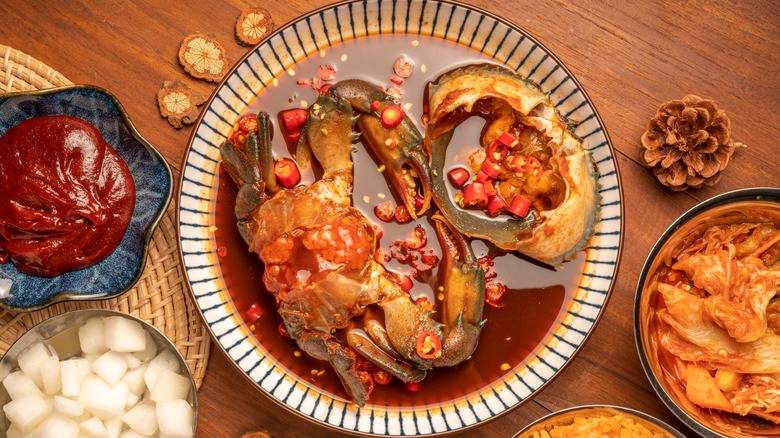The Best Ingredients To Pair With Soy Sauce, According To Professional Chefs
If you love the salty, umami flavor of soy sauce, chances are you always have a bottle in your kitchen. Not only is it the perfect condiment for many Asian dishes, a couple of drops can jazz up your favorite vegetables, protein, or sauces. While soy sauce is always in style, it may be among the oldest condiments currently in use. According to Britannica, its origins likely date back to China over 2,000 years ago. Made from fermented soybeans, it is rich in glutamate, giving it a strong umami taste.
Soy sauce fuses a mix of salty, sweet, sour, bitter, and umami tastes. Umami has been on-trend over the past few years, but it used to have a bad rap since many associate this taste with monosodium glutamate (MSG). This association overlooks the big picture. According to Pub Med, research indicates umami may enhance flavor profiles, make food more satisfying, and even stimulate salivation. Although practical health applications of umami require further study, we can still easily create interesting flavors using soy sauce in sometimes surprising, chef-approved ways.
Soy sauce with everything
Alabama chef Jim Smith of The Hummingbird Way Oyster Bar told Food & Wine that he recommends pairing soy sauce with crab and butter for an "outstanding, surprising" cocktail of salty, sweet, creamy, umami flavor. Basically, it's a party in your mouth. For best results, use high-quality soy sauce and "be bold with your ideas, but keep a light touch." According to Food & Wine, Colorado chef Pierson Shields likes to add soy sauce to mayo which makes a nice aioli for sandwiches and burgers.
Vietnamese-Australian chef Dan Hong told The Guardian that he believes many people limit soy sauce to a dipping sauce when it can be so much more. He also recommends looking beyond Asian cuisines. "You can use soy sauce to season your pasta and spaghetti bolognese." According to Hong, it starts with choosing the right soy sauce, including options like wheat-free Tamari. The most obvious other choice is whether to use light soy sauce for a salty seasoning or dark soy sauce for "color and caramelization."

